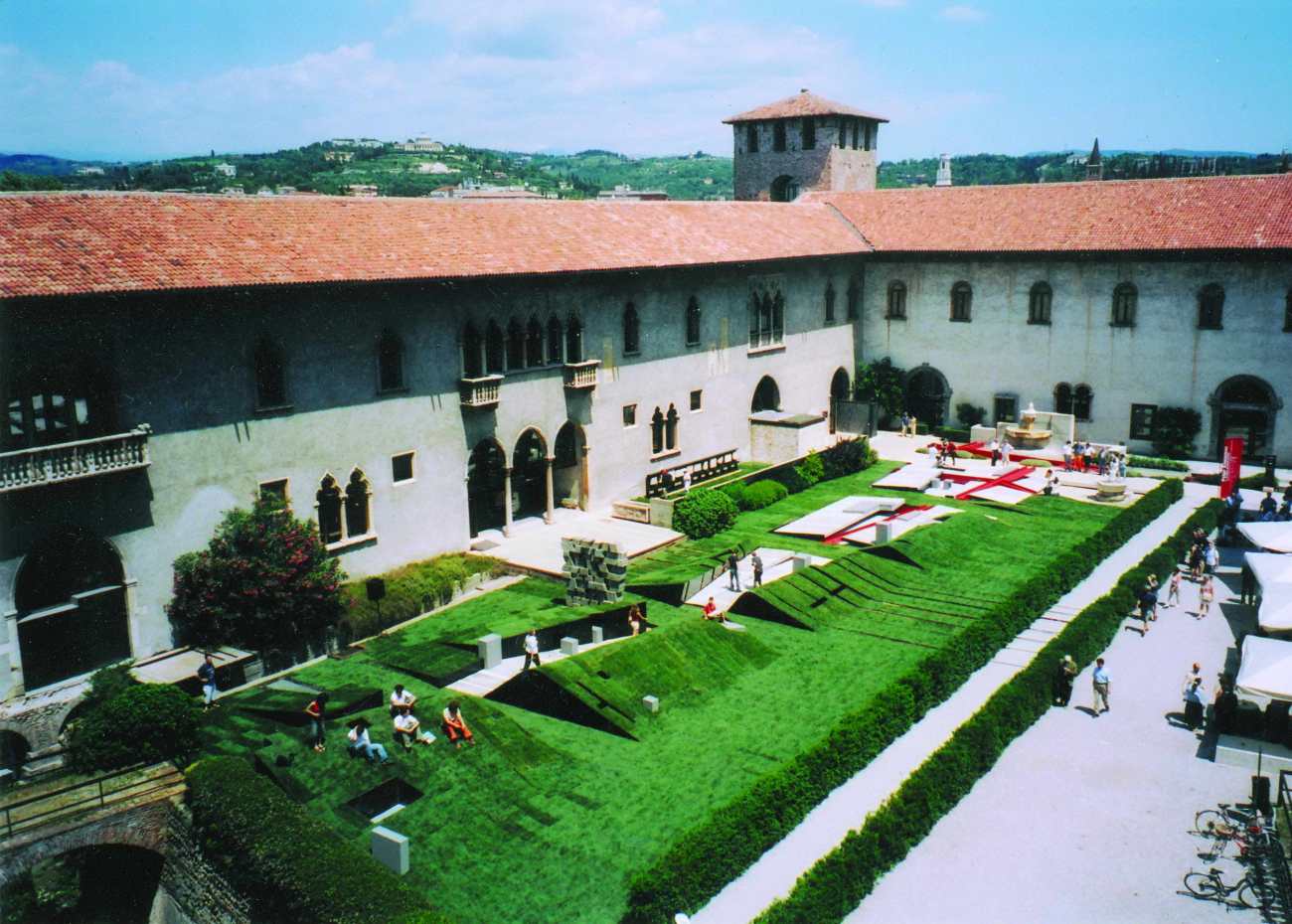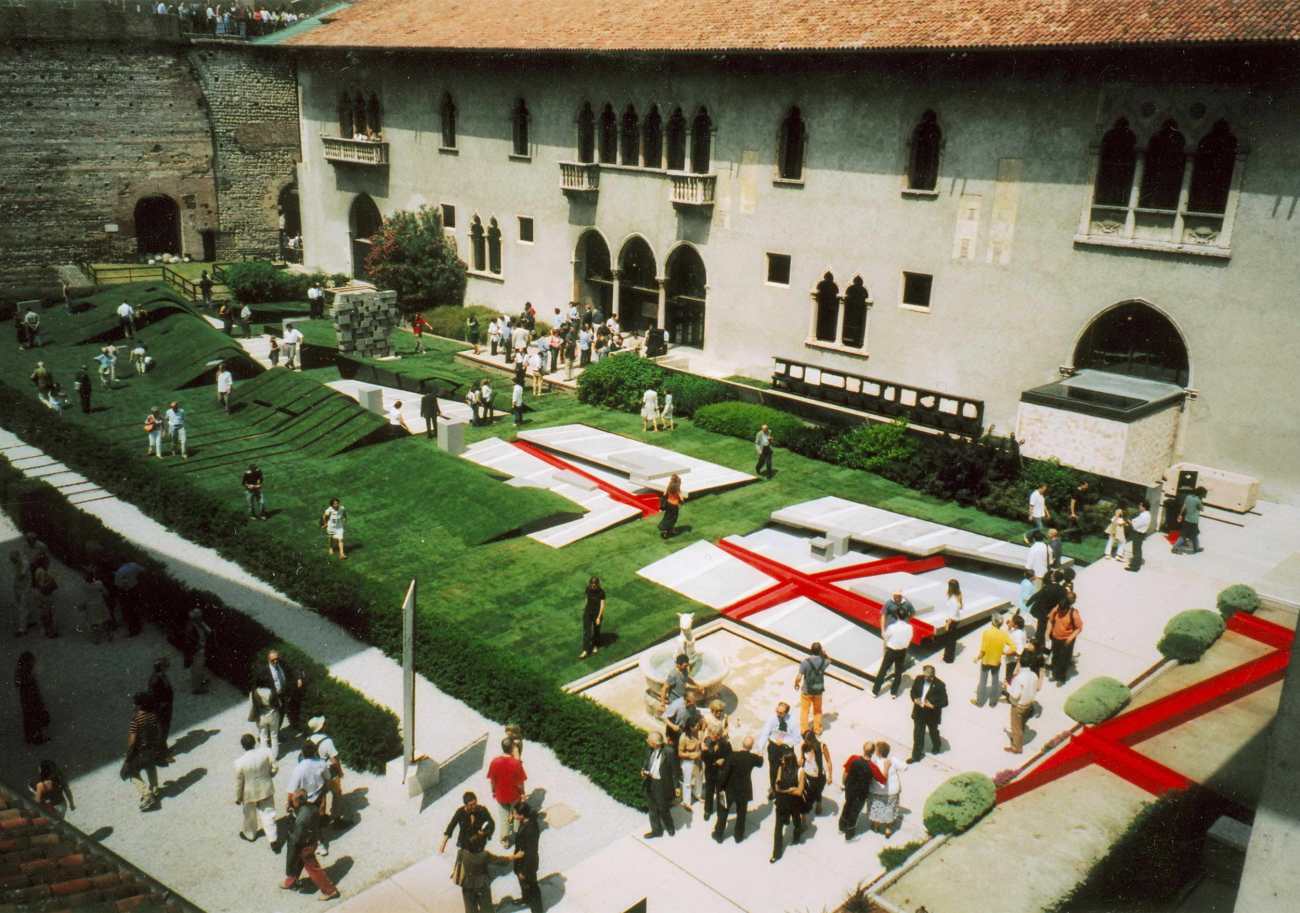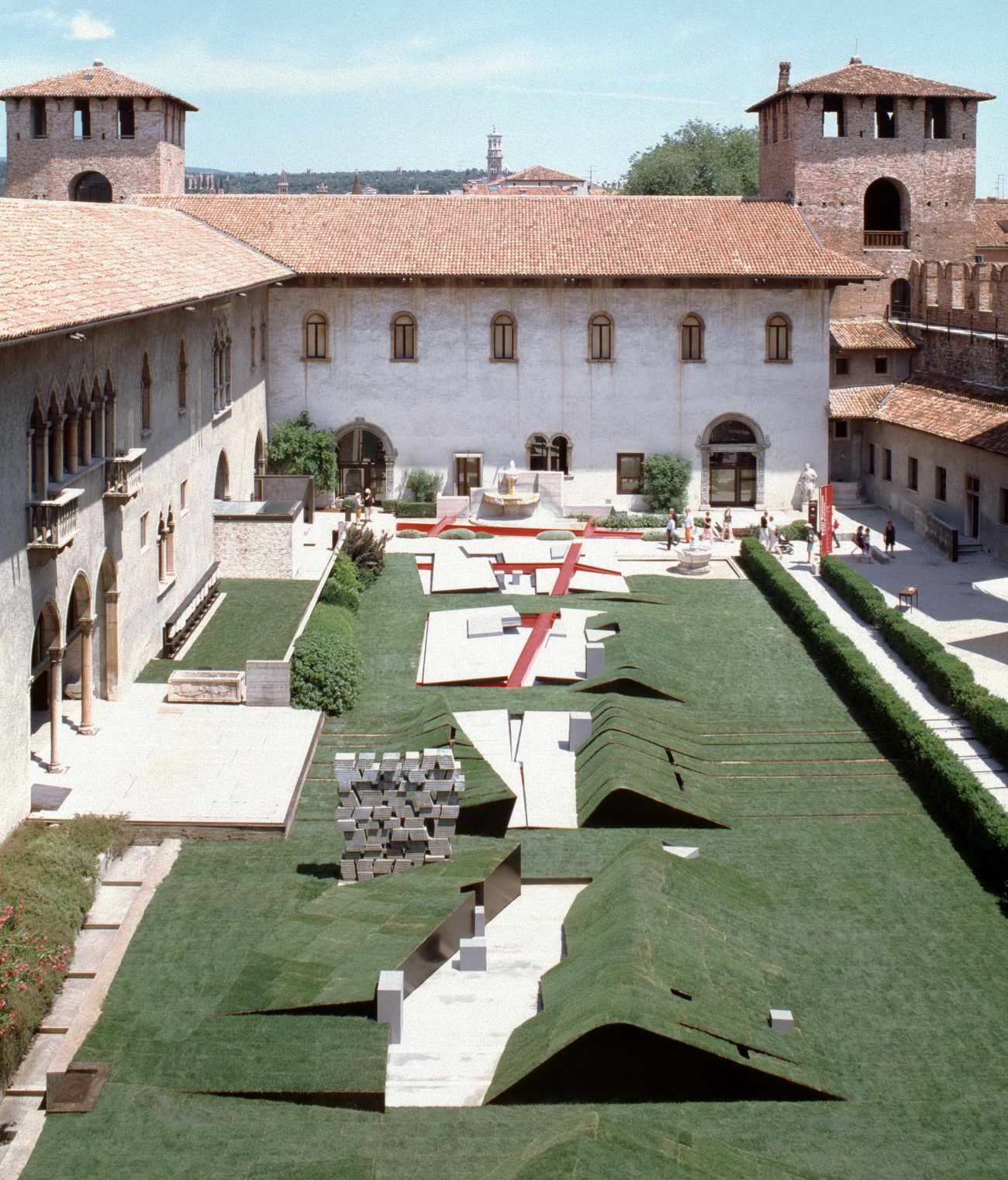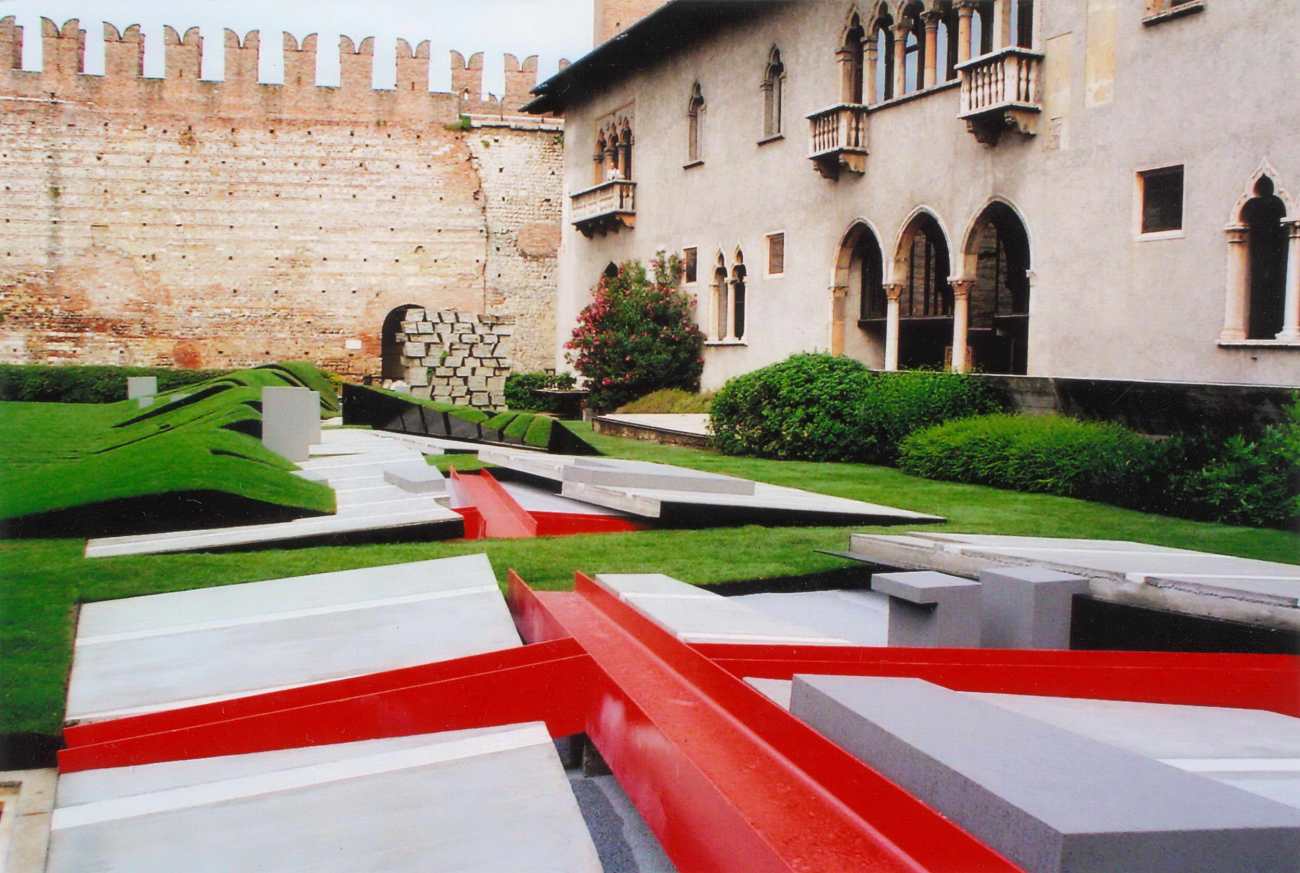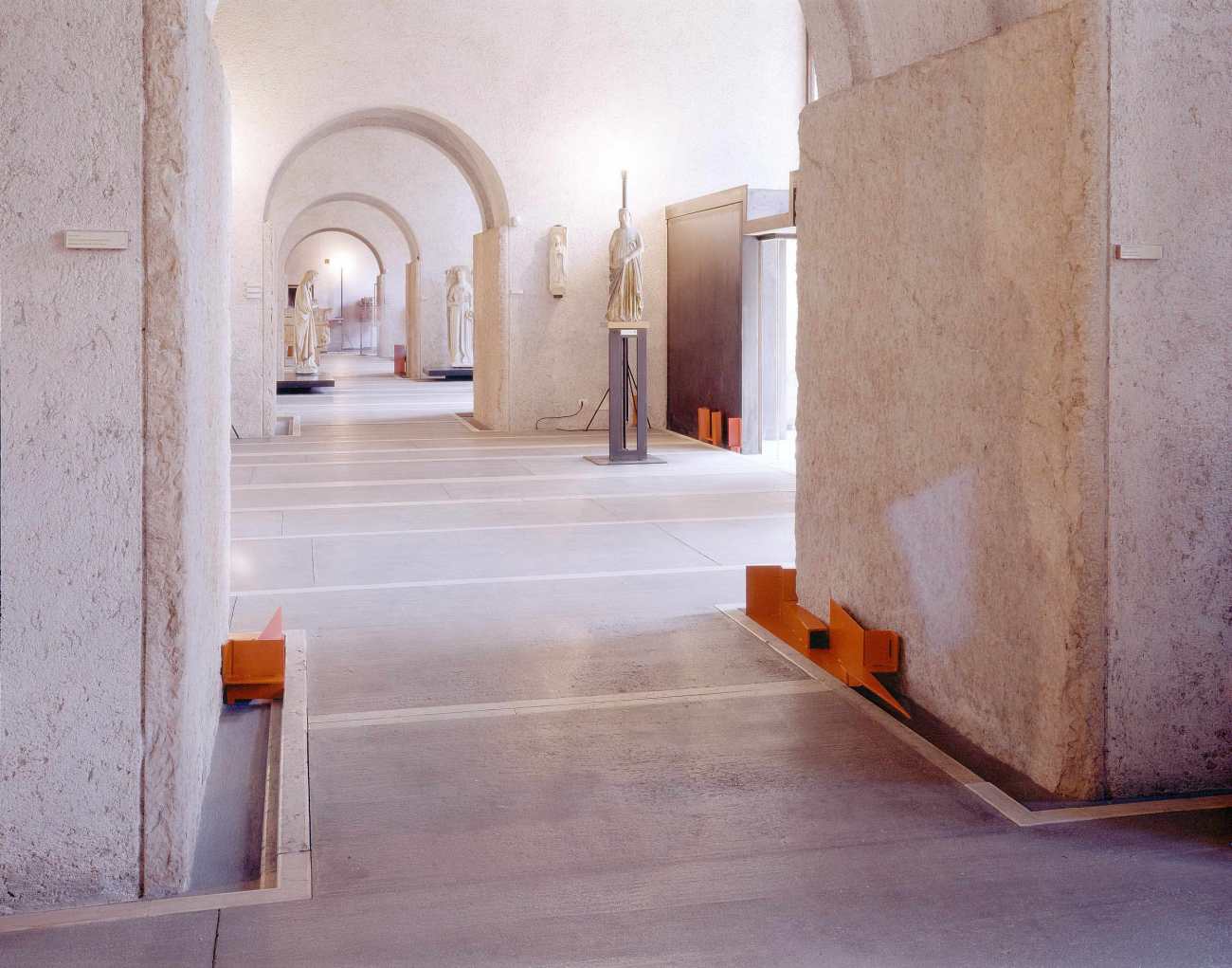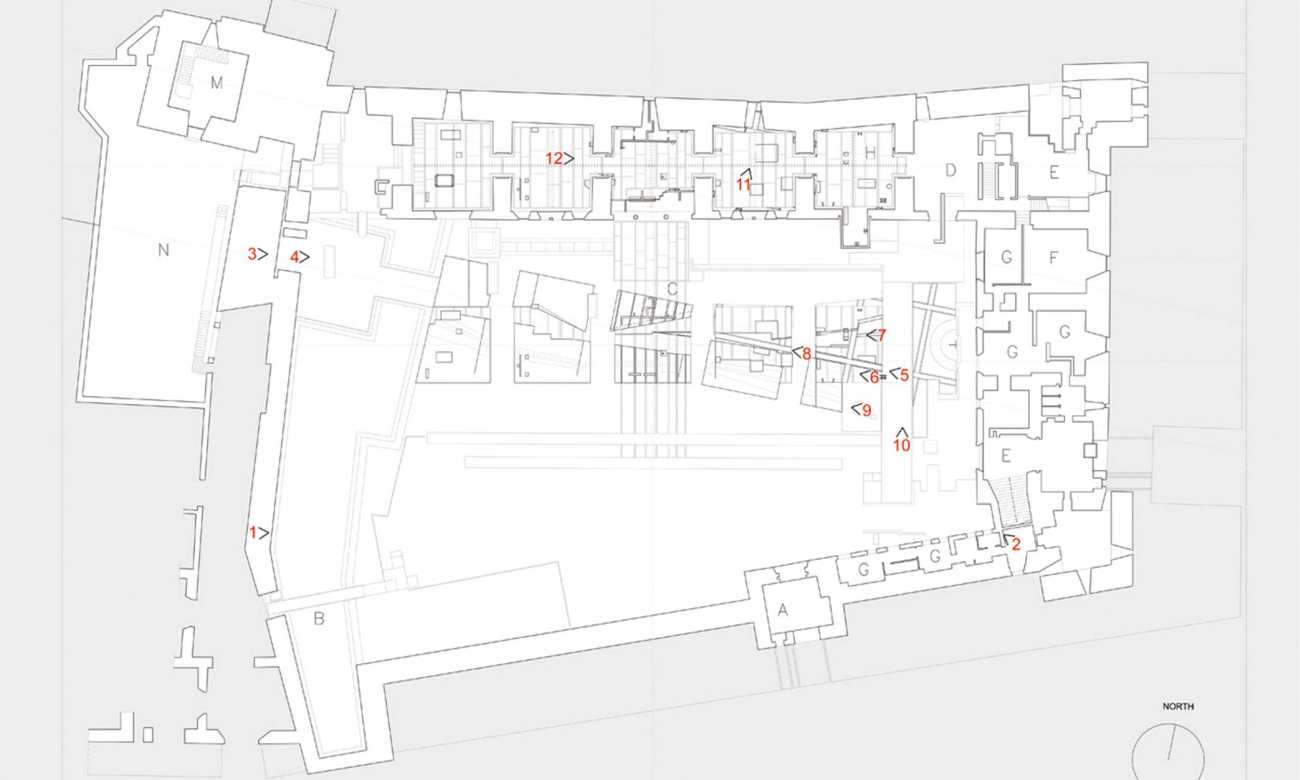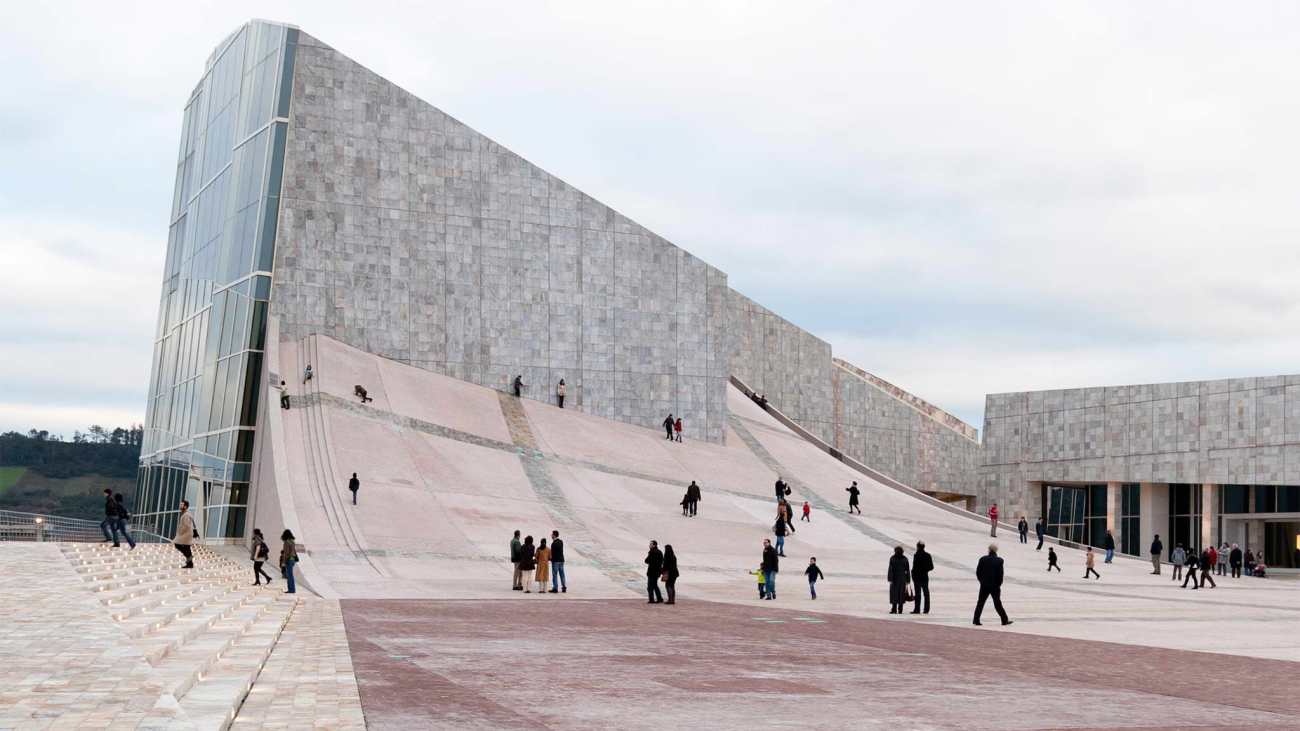| 公司: | Eisenman Architects | 类型: | 景观 |
|---|---|---|---|
| 地区: | 意大利 | 标签: | 花园 |
在考虑如何与卡洛-斯卡帕在Castelvecchio的作品进行对话时,我们选择了在看似不同的路径上的反思,也代表了对建筑内部学科逻辑的寻找。这种反思将是项目及其批判性反思的综合,将主题和对象结合在一起,超越了它们以前的限制。它将试图将项目重塑为一个批判性的项目,这个想法更能实现,因为它必须解决斯卡帕作品的碎片化和诗意的一面。
When considering ways to have a dialogue with the work of Carlo Scarpa at Castelvecchio, we chose to demonstrate that the struggle over seemingly disparate paths also represents a search for an internal disciplinary logic for architecture. This reflection would be an amalgam of projects and their critical reflection, an excessive “hypertext,” as it were, combining text and objects beyond the limits of their former textuality. It would attempt to reinvent the project as a metacritical one, an idea that is more problematic, but also more realizable, because it must address the fragmentary and the poetic aspect of Scarpa’s work.
展览本身是一个位于花园中的说教作品以及位于画廊中的零碎作品的项目。斯卡帕在内部的五个展室中放置了条形混凝土地板,这五个广场在花园中被替换成五个"挖掘"的垫子,位于平行于内部房间序列的轴线上。第二个,轴线在花园中对角线移动,与斯卡帕的垫子相交并交叉。它在Scarpa的空间序列的末端键掉了旋转的房间,暗示着倾斜的轴线预先存在。当人们从Scarpa的转角桥向博物馆入口移动时,混凝土垫就会显现出来。垫子裂开后,露出了艾森曼项目卡纳雷吉奥、IBA社会住宅、韦克斯纳艺术中心、Quai Branly博物馆和加利西亚文化城,它们从地面上迸发出 "时间重获 "的普鲁斯特式品质。
The exhibition itself is a project located as a didactic work in the garden and as a fragmentary work in the galleries. Scarpa placed striated concrete floors in the five interior exhibition rooms. These five squares are replaced in the garden as five “excavated” pads, located on an axis parallel to the internal sequence of rooms. A second, Eisenman axis move diagonally across the garden, intersecting with and crossing over Scarpa’s pads. It keys off the rotated room at the end of Scarpa’s sequence of spaces, suggesting that the skewed axis preexisted. The concrete pads are revealed as one moves from Scarpa’s corner bridge toward the museum entry. The pads crack open to reveal an amalgam of Eisenman project – Cannaregio, IBA Social Housing, the Wexner Center for the Arts, the Musée di Quai Branly, and The City of Culture of Galicia – which erupt out of the ground with a Proustian quality of “time regained.”
在内部,项目作品的碎片性与Scarpa和他的主题形成对峙。这些被 "挖掘"出来的柏林网格和圣地亚哥的笛卡尔网格的碎片,被涂成红色,作为一系列诗意的残留物出现在Scarpa的地板和城堡的走道之间的间隙中。在这里,就像在花园里一样,时间变成了通往过去和未来地方的交叉路径网络的一部分。作品不再是一个博物馆展览(博物馆中的展览),而是对博物馆本身性质的改造。
Inside, the fragmentary nature of the project pieces confronts Scarpa and his thematic. These fragments of the “excavated” grid of Berlin and the Cartesian grid of Santiago, painted red, appear as a series of poetic residues in the interstices between Scarpa’s floors and the walks of the castle. Here, as in the garden, time becomes part of network of crossing paths to a past and future place. The work is no longer a museum exhibition (an exhibition in a museum) but rather a transformation of the nature of the museum itself.
▼平面图 Plan
Project name: Il Giardino Dei Passi Perduti
Company name: Eisenman Architects
Website: www.eisenmanarchitects.com
Contact e-mail: info@eisenmanarchitects.com
Project location: Verona, Italy
Completion Year: 2004-2005
Building area (m²):930.000 m2
更新日期:2021-03-22 13:06:47
非常感谢 Eisenman Architects 带来的精彩项目, 查阅更多Appreciations towards Eisenman Architects for sharing wonderful work on hhlloo. Click to see more works!
